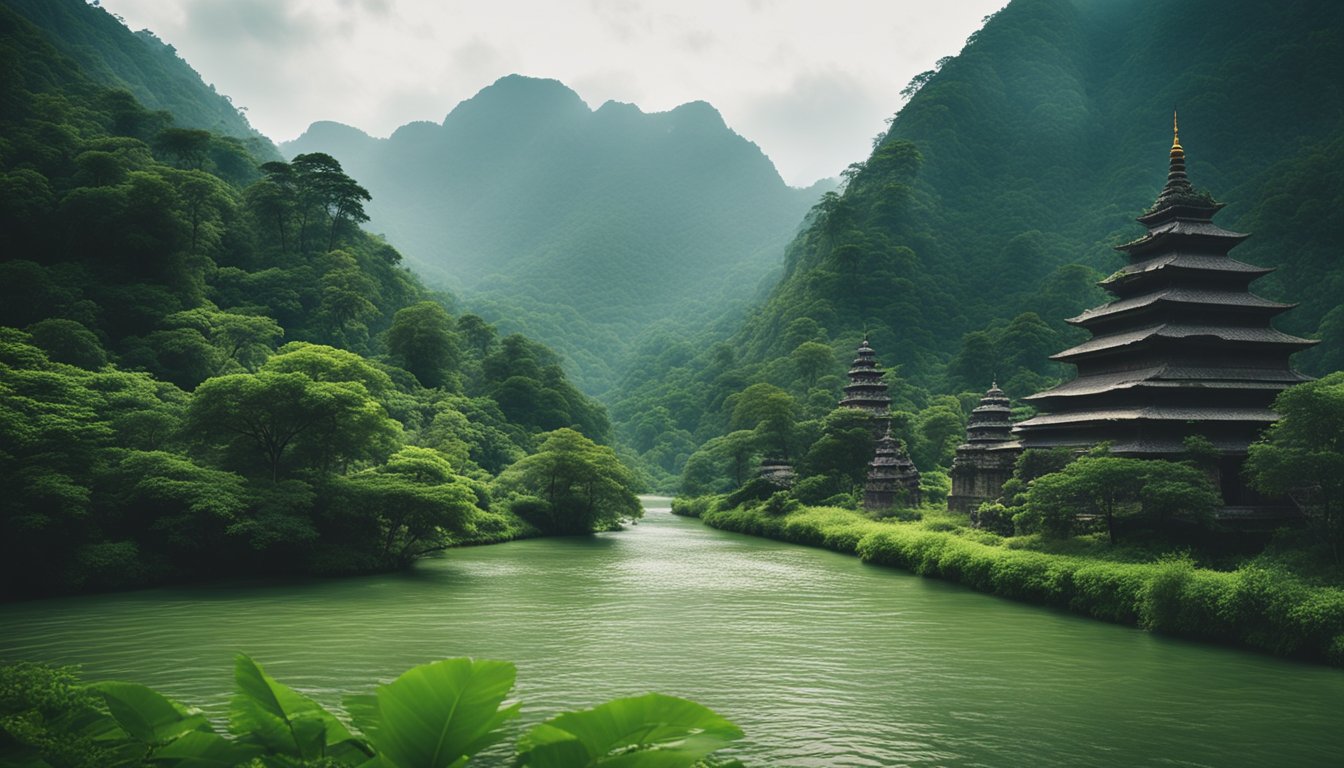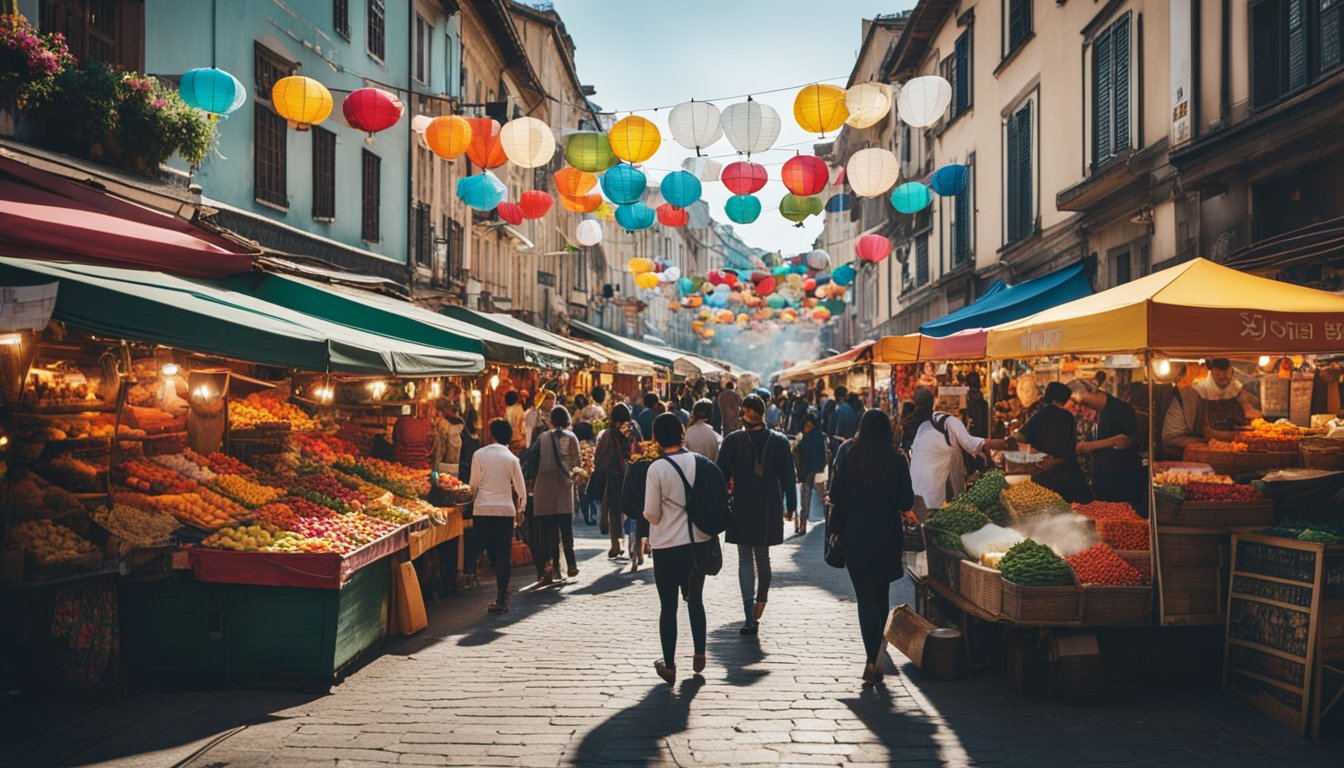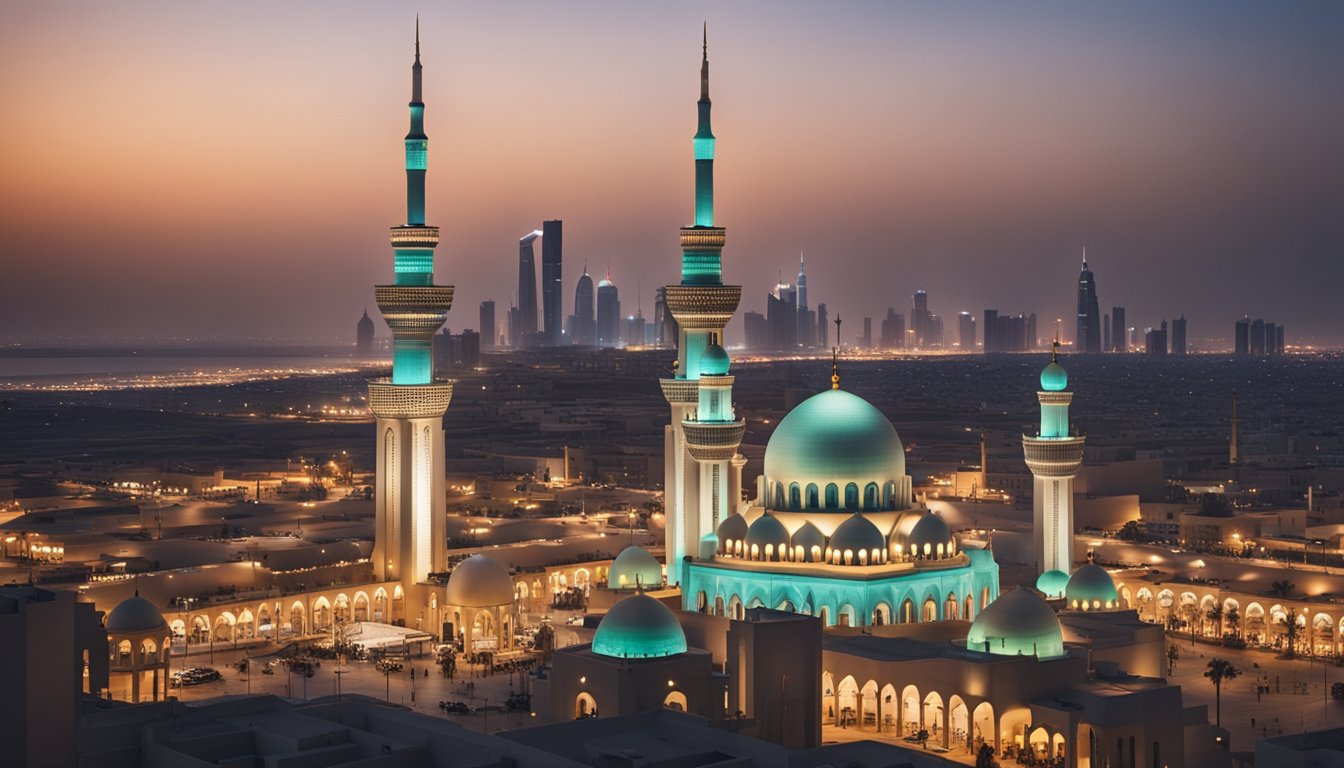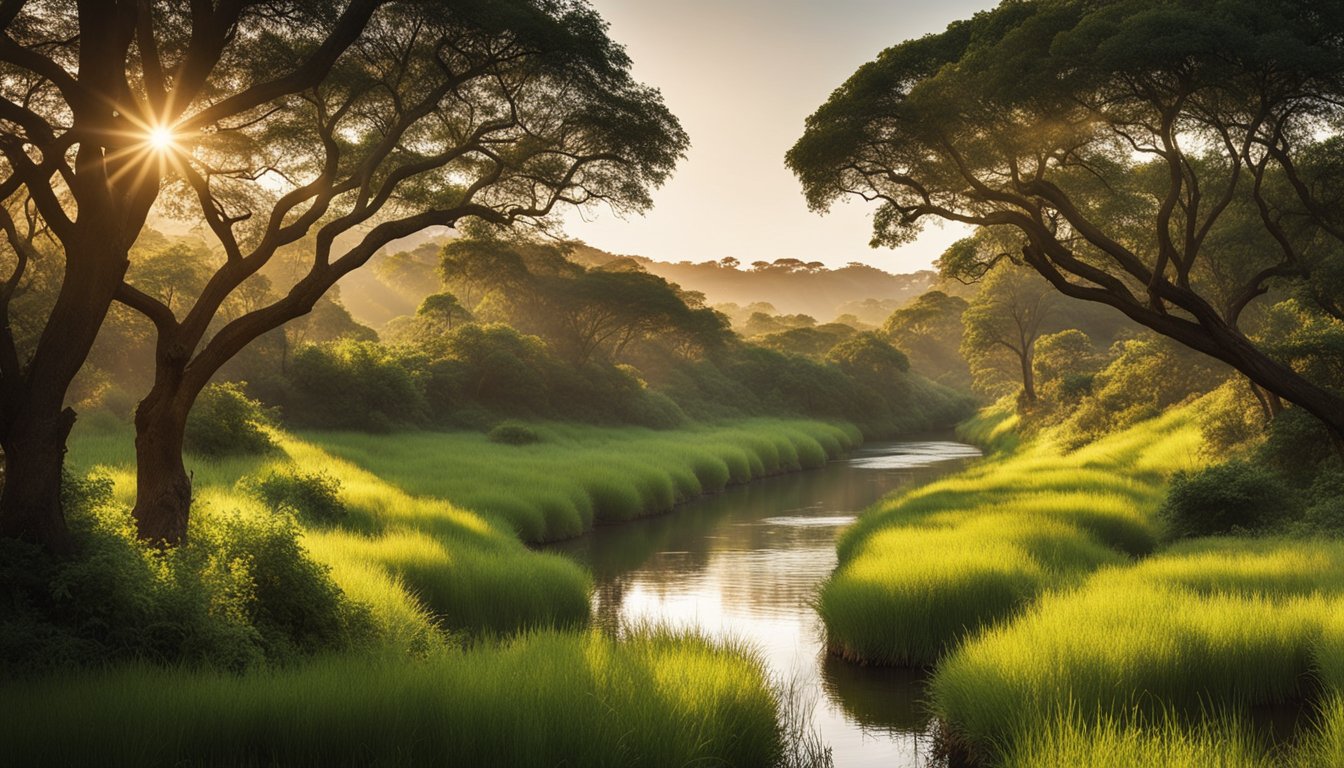North Korea, a land shrouded in mystery, offers intrepid travelers a glimpse into a rarely seen world. Beyond the media portrayal and past the vigilant guard of tourism regulations, there lie hidden gems waiting to be uncovered. This travel guide embarks on a journey through North Korea’s lesser-known landscapes, landmarks, and cultural experiences, providing a unique vantage point on a country that remains largely enigmatic to the outside world.

The exploration begins in the capital, Pyongyang, where one can witness grandiose monuments and perfectly choreographed mass dances. However, it’s outside the showcase city where the real adventure lies. Beyond the capital, travelers find a series of picturesque landscapes, from the rugged mountains and tranquil lakes of the Myohyangsan region to the pristine beaches along the east coast.
Understanding North Korea’s parameters for travel is essential, as all tours are tightly coordinated. Yet within these bounds, a rich tapestry of history and culture reveals itself to the observant traveler. This guide aims to illuminate the path to these subtle wonders, offering strategies to navigate the country’s tourist circuit while highlighting the profound beauty of its hidden corners.
Planning Your North Korean Adventure

Before embarking on a journey to North Korea, it is essential to thoroughly prepare and understand the unique considerations involved. From securing the correct visa to assessing the political landscape, and managing health and financial aspects, thoughtful preparation is key.
Visa and Entry Requirements
Travelers must procure a visa to enter North Korea. They can apply through a North Korean consulate or an authorized travel agency. A passport with a minimum of six months’ validity is mandatory. Standard requirements include:
- Completed visa application form
- Recent passport-size photograph
- Travel itinerary from an approved tour operator
- Possible interview at a North Korean embassy
Understanding the Political Climate
The political environment in North Korea is tightly controlled. Visitors should remain aware of local laws and political situation to ensure safe travel. It’s advisable to:
- Follow the guidance of tour operators at all times
- Avoid political discussions or criticism of the regime
- Stay informed via embassy updates and emergency contacts
Health and Safety Considerations
For health safety, ensure all required vaccinations are up-to-date before the trip. It’s highly recommended to carry comprehensive travel insurance that covers medical emergencies. Keep a list of local hospitals, although note that healthcare facilities may be limited.
Budgeting and Financial Tips
North Korea is not a typical budget travel destination due to the requirement of booking through tour agencies. Anticipate costs for:
- Tours
- Visa fees
- Souvenirs and additional activities
Travelers cannot use foreign money within North Korea and should budget to exchange currency into North Korean won upon arrival. Utilize official exchange services to avoid any legal issues. Always have some extra funds allotted for unforeseen expenses.
Discovering Pyongyang

Pyongyang, the capital city of North Korea, presents a unique blend of historical monuments and contemporary cultural experiences. Visitors can explore significant landmarks that resonate with the city’s history and indulge in local cuisine that defines its cultural identity. Efficient public transportation and a range of accommodations cater to tourists with varying travel preferences.
Historical Landmarks and Monuments
Pyongyang houses numerous historical landmarks, with the Kumsusan Palace of the Sun being among the most prominent. It serves as a mausoleum for President Kim Il-sung and Leader Kim Jong-il. Tourists can visit this significant site, often experiencing a deep expression of national reverence. Another iconic structure, the Ryugyong Hotel, dominates the skyline with its futuristic pyramid shape, though it remains unfinished. Nearby, the massive Kim Il-sung Square is known for hosting parades and mass dances. Visitors can also marvel at the Arch of Triumph, celebrating Korean resistance to Japanese rule.
- Kumsusan Palace of the Sun: Mausoleum for historic leaders.
- Ryugyong Hotel: A futuristic skyscraper symbolizing development.
- Kim Il-sung Square: Central public space for events.
- Arch of Triumph: Monument commemorating Korean resistance.
Cultural Experiences and Cuisine
Cultural immersion in Pyongyang often involves witnessing traditional performances or visiting cultural institutions. For those interested in understanding Pyongyang’s ideology, a trip to the Juche Tower is insightful. This monument is dedicated to the Juche philosophy founded by Kim Il-sung. Experiencing local cuisine is a must for visitors, with dishes such as kimchi, cold noodles (naengmyeon), and barbecued meats offering a taste of the region’s flavors.
- Juche Tower: Symbolizes the Juche philosophy of self-reliance.
- Cultural Performances: Traditional music and dance.
- Local Cuisine:
- Kimchi: Fermented vegetables, a Korean staple.
- Naengmyeon: Cold buckwheat noodles.
- Barbecued Meats: Various meats cooked over a grill.
Public Transportation and Accommodation
The Pyongyang Metro stands as one of the deepest metro systems in the world and is also noted for its elaborate station decor. It serves as a reliable means of public transport for visitors navigating the city. Accommodations in Pyongyang range from budget guesthouses to more luxurious hotels, catering to diverse traveler needs. The centrally located Ryugyong Hotel, despite its incompletion, is surrounded by several operational hotels that offer both comfort and convenience for tourists.
- Pyongyang Metro: Efficient and deeply situated transport system.
- Accommodations:
- Budget Guesthouses: Economical options for travelers.
- Luxury Hotels: For those seeking added comfort and services.
Beyond the Capital

North Korea’s allure extends well beyond its enigmatic capital, inviting travelers to its countryside which is steeped in history and endowed with natural beauty. Venture beyond Pyongyang to discover a different side of this secluded nation.
The Mystique of the Countryside
The North Korean countryside offers a rare glimpse into a lifestyle unmarred by modern excess. Visitors can experience the simplicity of rural life amid landscapes that change with the seasons. Hamhung, the second-largest city, provides a window into the industrial life of the nation and offers access to the pristine East Sea coastline.
Historic Kaesong and the DMZ
Kaesong is a city with a rich historical tapestry, once the capital of the Koryo Dynasty. Here lies the Koryo Museum, housed in an old Confucian school, presenting artifacts that portray the region’s ancient history. Just beyond Kaesong is the Demilitarized Zone (DMZ), a symbol of division and the quest for peace, drawing those with an interest in modern history and the legacy of Kim Jong-il.
| Kaesong Landmarks | Description |
|---|---|
| Koryo Museum | Museum detailing ancient history and Confucian legacy. |
| DMZ | Stretches across the Korean Peninsula, offering controlled tours. |
Natural Wonders of the North
North Korea’s rugged terrain rises to unveil the majestic Kumgang Mountains, an adventure seeker’s paradise. This region boasts scenic hikes and the opportunity to witness the untouched natural beauty the country has to offer. Trails lead to panoramic views, waterfalls, and temple sites, encapsulating the serene and wild spirit of the North.
Cultural Insights and Heritage

North Korea presents a unique cultural panorama shaped by its history and ideology. The reclusive state offers visitors an opportunity to witness its distinctive heritage and cultural experiences that are deeply interwoven with the nation’s identity.
North Korea’s Ideology and History
The ideological foundation of North Korea is deeply rooted in Juche, or self-reliance, which has shaped the country’s governance and way of life since the mid-20th century. This principle emphasizes independence in all sectors, and it is a central element to understanding the state’s policies and societal structure. Historically, the Korean Peninsula has seen a tumultuous past, including the era of the Koryo Dynasty, which lasted from 918 to 1392, and is known for its significant contributions to Korean culture and arts, such as the distinctly beautiful Koryo celadon ceramics.
Chronicling over several centuries, the history is marked by Japanese occupation, followed by the division of the peninsula after World War II, leading to the establishment of the Democratic People’s Republic of Korea in the north. These historical events have contributed to the strong nationalistic and collectivist culture that is visible today.
- Historical Timeline:
- 918-1392: Koryo Dynasty flourishes, influencing culture.
- 1910-1945: Japanese occupation impacts cultural heritage.
- 1948: Democratic People’s Republic of Korea established.
Intangible Cultural Experiences
When it comes to intangible cultural experiences, North Korea offers a range seldom found elsewhere. From witnessing mass games featuring synchronized gymnastics and dance to exploring the music, language, and customs unique to the region, these experiences provide insights into the country’s cultural framework.
Visitors can engage with North Korea’s heritage through various festivals and performances, such as the Arirang Mass Games, which encapsulate the country’s history, ideology, and aspiration through a grand display of artistic expression. Additionally, traditional music performances, often accompanied by the gayageum, a traditional Korean string instrument, give a glimpse into the nation’s artistic legacy.
- Cultural Experience Checklist:
- Observe the Mass Games for a display of collective spirit.
- Listen to traditional gayageum music performances.
- Participate in local festivals to experience cultural vibrancy.
Travel Tips and Practical Information

When traveling to North Korea, it is essential for travelers to understand the local climate, communicate respectfully, and adhere strictly to the country’s regulations for a safe and insightful journey.
Weather and Best Time to Visit
North Korea experiences a temperate climate with four distinct seasons. Spring (April to June) and autumn (September to November) are considered the best times to visit, offering mild temperatures and minimal rainfall. Travelers should pack accordingly, with light layers for spring and warmer clothing for the cooler autumn months.
| Season | Temperature Range | Considerations |
|---|---|---|
| Spring | 5-25°C (41-77°F) | Light Jackets |
| Autumn | 3-23°C (37-73°F) | Warm Clothing |
Communication and Etiquette
Communication can be challenging as the predominant language is Korean. Learning basic Korean phrases is recommended to ease interactions. It is important to remember that etiquette is highly valued; always be polite and respectful in all forms of communication.
Essential Korean Phrases:
- Hello: 안녕하세요 (Annyeonghaseyo)
- Thank You: 감사합니다 (Gamsahabnida)
- Yes: 네 (Ne)
- No: 아니요 (Aniyo)
Staying Safe and Respecting Regulations
Travelers must observe travel advisories and understand that tourism is carefully managed. Always follow local laws, including regulations surrounding photography and sightseeing. Public transportation is limited, so visitors often rely on guided tours; domestic flights may be available depending on the itinerary. It is important to handle all financial transactions lawfully, using the local currency when required.



